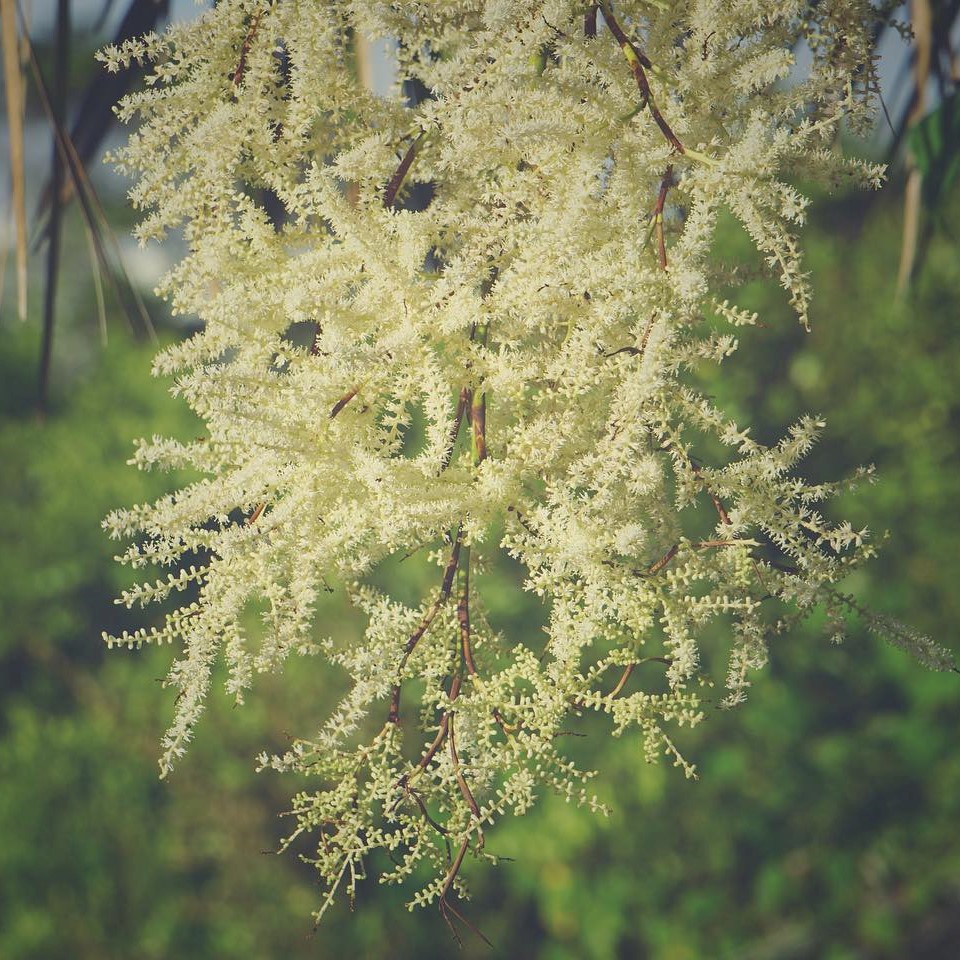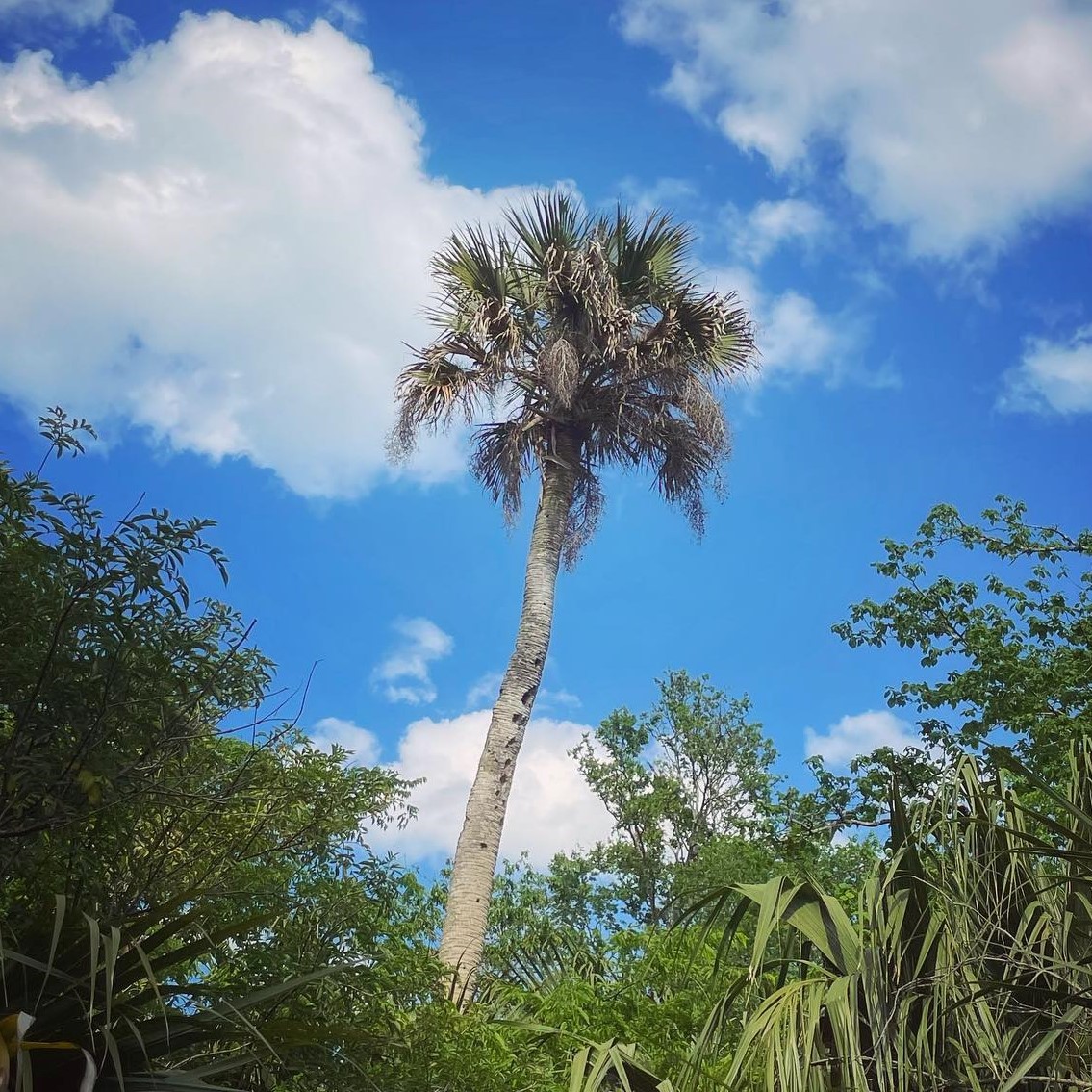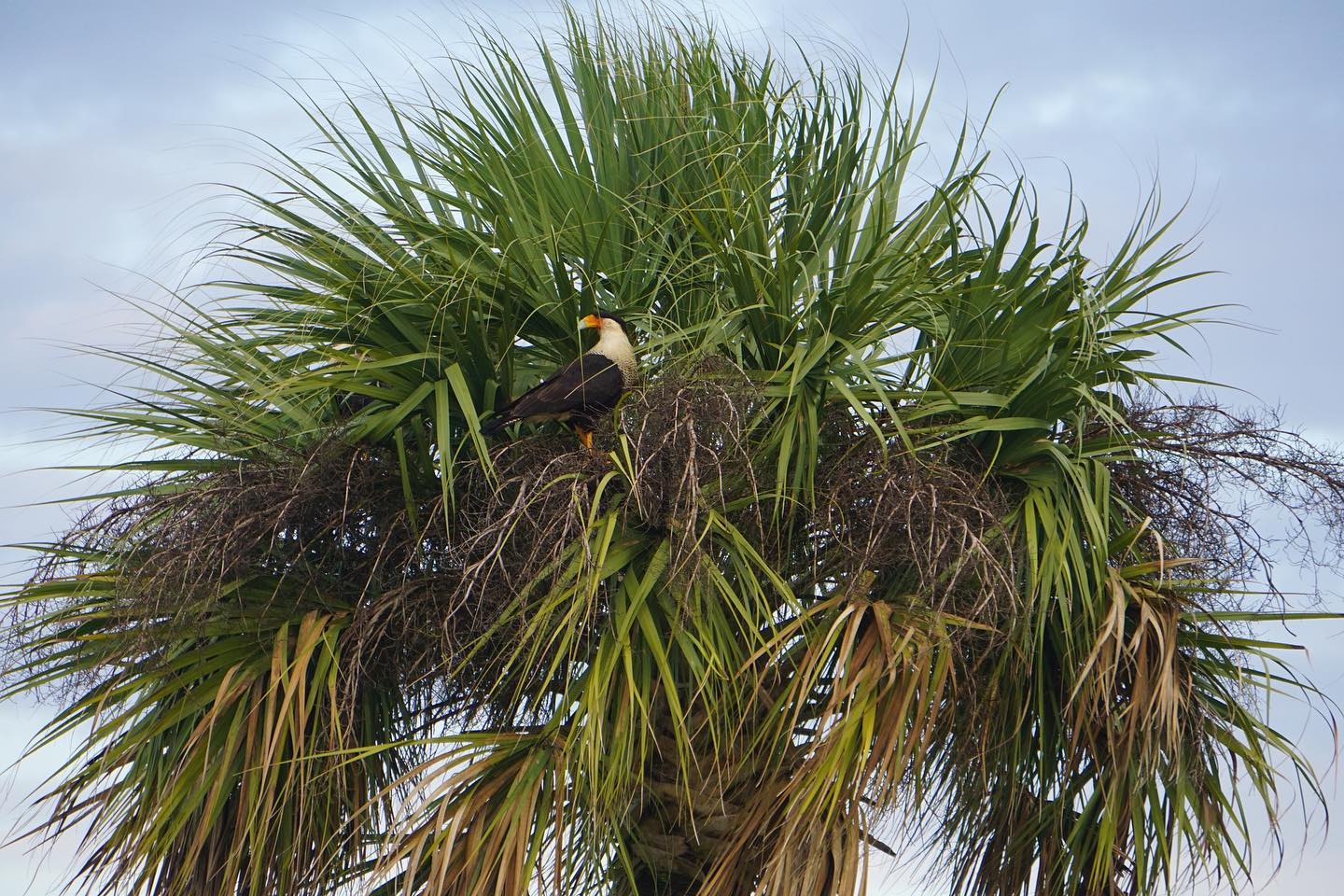Sabal palm
Pictured above: Sabal palm (Sabal palmetto) by Betsy Harris. Click on terms for botanical definitions. View post as a PDF.
As one of our most ubiquitous native plants, it is easy to see why Sabal palm is Florida’s state tree. Also known as Cabbage palm, this evergreen fan palm occurs nearly throughout Florida in pinelands, hammocks, coastal dunes, swamps and floodplain forests. It provides significant food, shelter and nesting material for many species of birds, mammals, reptiles and amphibians. Its “boots” host a variety of ferns, some of which are threatened and endangered. It also is the larval host of the Monk skipper and other butterflies, and insects nectar on its flowers.
Flowers are tiny (less than ½ inch in diameter), creamy white and born in long (up to 1 foot) compound panicles. Leaves are fanlike and deeply divided with smooth petioles. They are costapalmate, meaning they have an obvious midrib. Leaflets are many and often have threadlike filaments along the margins. The smooth petioles, midrib and filaments are keys to differentiating a young Sabal palm from Saw palmetto (Serenoa repens). The trunk is generally straight (although it may be curved), unbranched, and often covered in remnant leaf bases, or “boots.” Fruits are pea-sized, shiny and black with a single seed.


Native Americans called it their “tree of life,” using it for shelter and to make tools. Fiber was used to make netting, and the fronds were used for food and weaving baskets. Its edible terminal bud (or “heart”) has a cabbage-like taste. Harvesting it, however, kills the tree and is highly discouraged.
Family: Arecaceae (Palm family)
Native range: Nearly throughout Florida
To see where natural populations of Sabal palm have been vouchered, visit florida.plantatlas.usf.edu.
Hardiness: Zone 8A–11A
Lifespan: Perennial
Soil: Sandy, loamy, or calcareous soils
Exposure: Full sun to partial shade
Growth habit: 10–50’+ tall
Propagation: Seed (slow growing)
Garden tips: Sabal palm works well as a specimen tree in a variety of landscapes, as it is highly adaptable. It is a hardy, long-lived tree that is resistant to salt, hurricane winds, flood, fire and drought. It is extremely slow growing except in wet locations.
Notes on care: Sabal palms do not need their fronds trimmed. They are healthier if fronds are left to fall on their own. Remember that green fronds supply food for the tree, and old fronds and fruit have much wildlife value. In the wild, some naturally lose their boots, while others do not. Though generally free of disease, newly planted palms and established palms under stress may experience bud rot. Call a professional for treatment.
Sabal palm trees are available from nurseries that specialize in Florida native plants. Visit www.PlantRealFlorida.org to find a nursery in your area.

